A Traveler’s Guide to the Breathtaking Great Buddha Temple Grottoes

An Essential Guide to Visiting Great Buddha Temple Grottoes Scenic Area
In This Guide
- An Essential Guide to Visiting Great Buddha Temple Grottoes Scenic Area
- The Rich History and Legends of Great Buddha Temple Grottoes Scenic Area
- Main Highlights: What You Absolutely Can’t Miss
- Planning Your Visit: A Practical Guide
- Tickets: Prices, Booking, and Tips
- How to Get There: A Complete Transportation Guide
- Local Cuisine and Accommodation Nearby
- Frequently Asked Questions
- Final Thoughts on Your Trip
Nestled in the heart of China’s rich historical tapestry, the Great Buddha Temple Grottoes Scenic Area (大佛寺石窟景区) beckons travelers with its stunning amalgamation of artistry, spirituality, and ancient craftsmanship. This site, a testament to centuries of Buddhist devotion, offers an unforgettable journey into the profound cultural heritage of China. As you step into this sacred sanctuary, you are not merely a visitor; you become part of a living narrative that spans over a millennium, where every carved statue and mural whispers tales of faith, artistry, and the relentless passage of time.
The Great Buddha Temple, with its impressive grottoes, showcases a remarkable collection of Buddhist sculptures and intricate carvings that have stood the test of time. Each grotto serves as a window into the past, revealing the evolution of religious art influenced by various dynasties, geographical exchanges, and the profound depths of human creativity. As an international traveler, you will find yourself captivated by the delicate balance of serenity and grandeur that defines this site, known for its breathtaking representations of the Buddha and other celestial beings.

Great_Buddha_Temple_Grottoes_Scenic_Area.
Why Visit the Great Buddha Temple Grottoes?
- Cultural Significance: The grottoes are not just artistic achievements; they embody the spiritual journey of countless monks and artisans who dedicated their lives to this sacred craft.
- Architectural Marvels: Discover the ingenuity of ancient builders who carved these masterpieces directly into the rock, a feat that showcases both their technical skill and artistic vision.
- Historical Context: Each grotto tells a story, from the early influences of Indian Buddhism to the unique Chinese interpretations that blossomed over the centuries.
As you prepare for your visit, anticipate a blend of awe and introspection as you explore this UNESCO World Heritage site. The Great Buddha Temple Grottoes offer more than just visual splendor; they invite you to reflect on the enduring power of faith and the rich cultural dialogues that have shaped this remarkable corner of the world. Prepare to be inspired, educated, and profoundly moved as you embark on this journey through time and artistry.
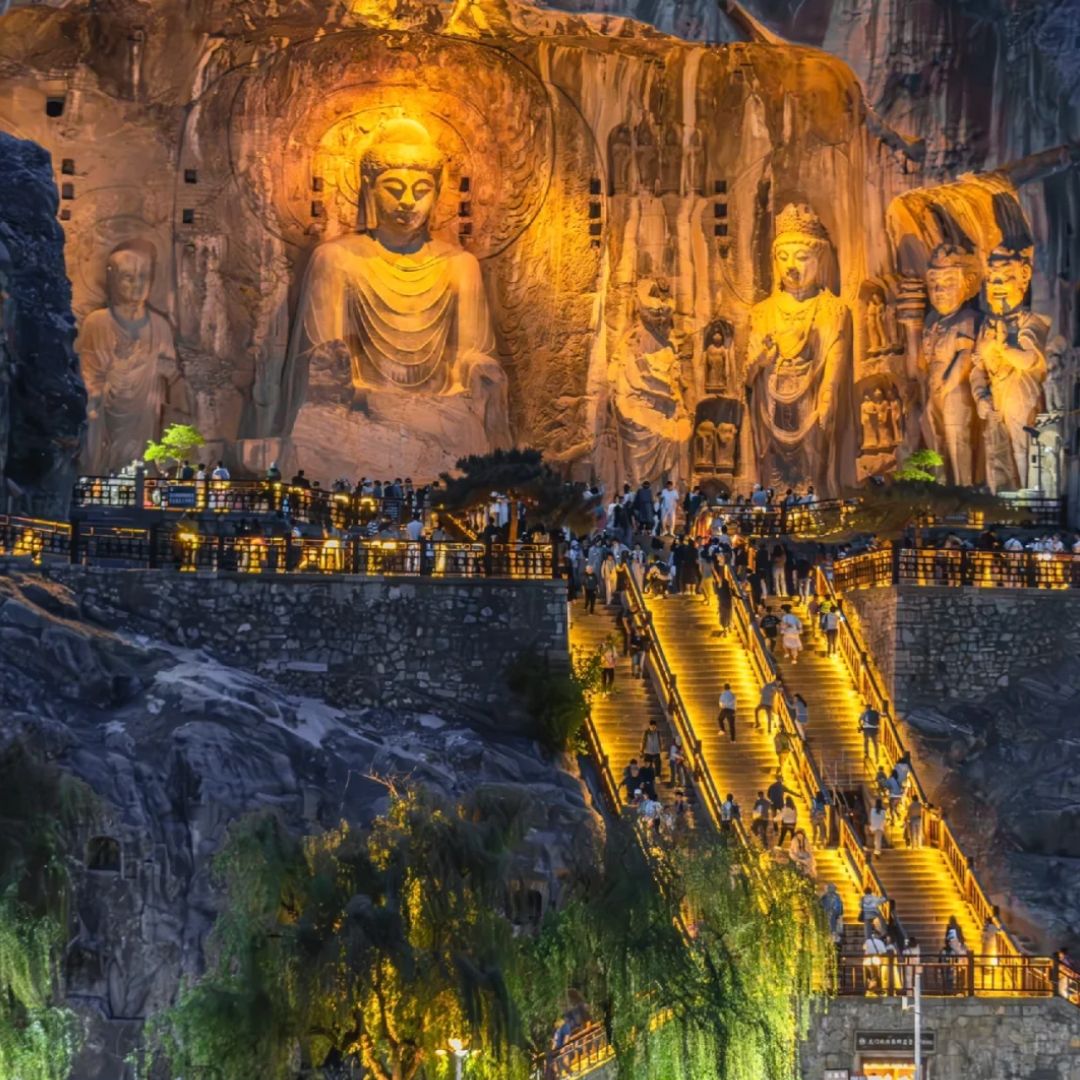
Great_Buddha_Temple_Grottoes_Scenic_Area.
The Rich History and Legends of Great Buddha Temple Grottoes Scenic Area
Nestled in the scenic embrace of the Great Buddha Temple Grottoes Scenic Area (大佛寺石窟景区), visitors are transported into a realm where ancient history and spiritual artistry intertwine. This remarkable site, located in the heart of Shanxi Province, serves as a testament to the rich tapestry of Chinese Buddhist culture, showcasing the evolution of art and devotion over centuries.
A Journey Through Time
The origins of the Great Buddha Temple Grottoes can be traced back to the Northern Qi Dynasty (550–577 AD). It was during this time that monks began to carve intricate statues and elaborate murals into the cliffs, driven by their dedication to spreading Buddhist teachings. The site flourished under the patronage of various dynasties, particularly during the Tang (618–907 AD) and Song (960–1279 AD) Dynasties, when the artistry reached its zenith.
The grottoes themselves are a marvel of engineering and artistry, featuring over 100 caves adorned with more than 1,000 sculptures and 2,000 square meters of murals. Each cave tells a distinct story, often depicting scenes from the life of the Buddha, bodhisattvas, and various Buddhist deities. The harmonious blend of Chinese and Indian artistic influences is a hallmark of this site, making it a compelling destination for those interested in the cross-cultural exchanges that flourished along the Silk Road.
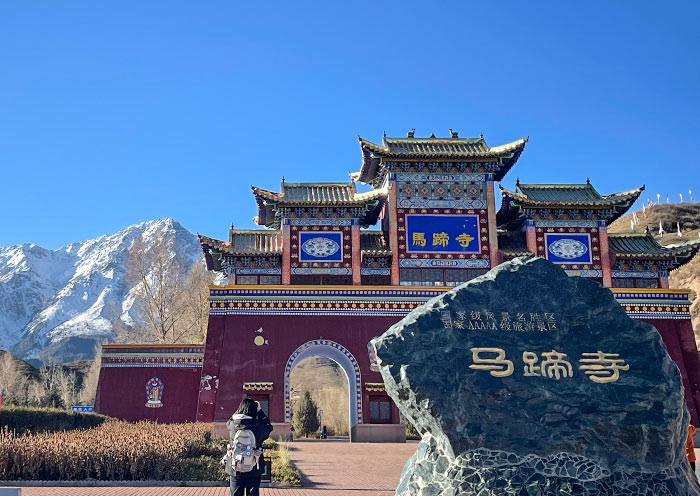
Great_Buddha_Temple_Grottoes_Scenic_Area.
Legends That Enrich the Landscape
Legends surrounding the Great Buddha Temple Grottoes add an enchanting layer to this historical site. One popular tale speaks of a wandering monk who, upon discovering the sheer beauty of the cliffs, envisioned a place where spiritual seekers could find solace. Inspired, he began carving the first statues, which later attracted disciples and artists from distant lands. This legend reflects the site’s enduring allure as a sanctuary for spiritual reflection and artistic expression.
Another captivating story involves the Giant Buddha statue, which stands majestically within one of the main grottoes. According to lore, this statue was sculpted by a renowned artisan who, guided by divine inspiration, worked tirelessly for years. Locals believed that the statue could grant wishes to those who offered sincere prayers, leading to an influx of pilgrims who sought blessings and enlightenment.

Great_Buddha_Temple_Grottoes_Scenic_Area.
Cultural Significance and Preservation
The Great Buddha Temple Grottoes hold immense cultural significance, not just as an artistic achievement but as a historical record of the region’s Buddhist heritage. The site has been a locus for spiritual gatherings and a source of inspiration for countless artists, scholars, and monks throughout history. The intricate carvings and murals offer invaluable insights into the socio-religious dynamics of ancient China, reflecting the aspirations and beliefs of the people.
Today, preservation efforts are paramount. Recognizing the grottoes’ fragility, local authorities and cultural organizations work diligently to protect these treasures from the ravages of time and tourism. Visitors are encouraged to engage respectfully, ensuring that future generations can also experience the profound beauty and history encapsulated within these sacred walls.
Visiting the Grottoes
For travelers seeking to immerse themselves in this unique blend of history and spirituality, the Great Buddha Temple Grottoes offer an unforgettable experience. Guided tours provide deeper insights into the artistry and legends, allowing visitors to appreciate not only the visual splendor but also the stories that breathe life into the stone.

Great_Buddha_Temple_Grottoes_Scenic_Area.
From the moment you step into this historic site, the echoes of the past resonate, inviting you to explore the rich history and legends that define the Great Buddha Temple Grottoes Scenic Area. Whether you are a history enthusiast, an art lover, or a spiritual seeker, this destination promises a journey unlike any other, where every cave and sculpture whispers tales of devotion and creativity from a bygone era.
Main Highlights: What You Absolutely Can’t Miss
Discover the Unmissable Highlights of the Great Buddha Temple Grottoes Scenic Area
The Great Buddha Temple Grottoes Scenic Area (大佛寺石窟景区) is a treasure trove of history, culture, and breathtaking artistry. Nestled in the stunning landscape of Gansu Province, this site is a must-visit for international travelers seeking a deeper understanding of Chinese history and Buddhist art. Here are the key highlights that you absolutely cannot miss during your visit:
1. The Majestic Great Buddha Statue
At the heart of the grottoes lies the awe-inspiring Great Buddha, a colossal figure that stands at an impressive height of 27 meters (about 89 feet). Carved into the cliff face, this statue is a remarkable feat of ancient craftsmanship and serves as the centerpiece of the grottoes. Be sure to take your time to appreciate the intricate details that adorn this emblem of Buddhist devotion.
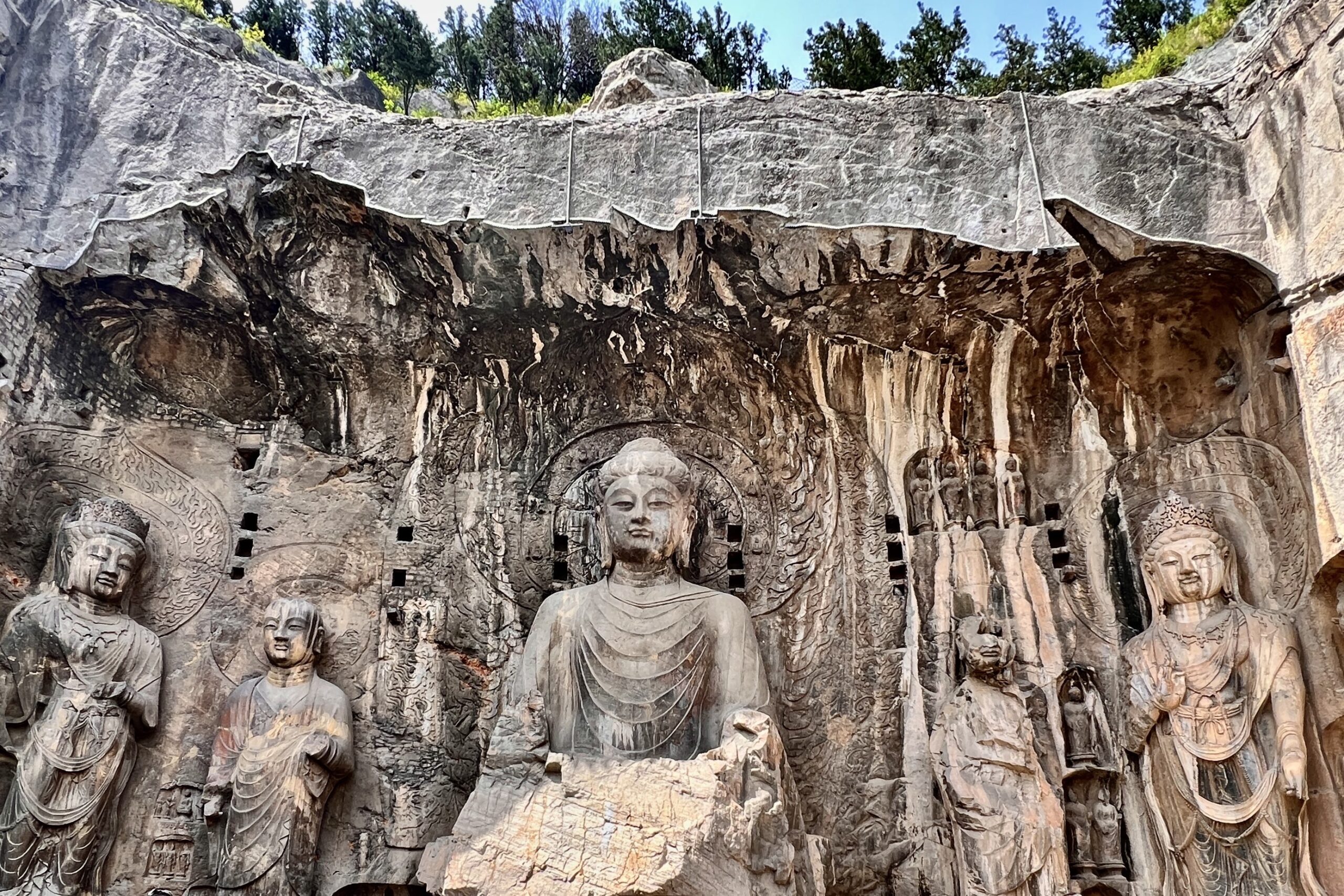
Great_Buddha_Temple_Grottoes_Scenic_Area.
2. Intricate Cave Murals
The grottoes are home to numerous cave temples adorned with exquisite murals that depict various Buddhist themes, legends, and celestial beings. Each mural tells its own story, showcasing the evolution of Buddhist art over the centuries. Don’t miss Cave 12, known for its vibrant colors and detailed representations of heavenly beings, or Cave 6, which features scenes from the life of Buddha himself.
3. The Historical Significance
Dating back to the 5th century, the Great Buddha Temple Grottoes are of immense historical importance. As a significant site on the ancient Silk Road, they served as a cultural hub where ideas, art, and religion mingled. The inscriptions and artifacts found within the grottoes provide invaluable insights into the socio-cultural dynamics of the time.
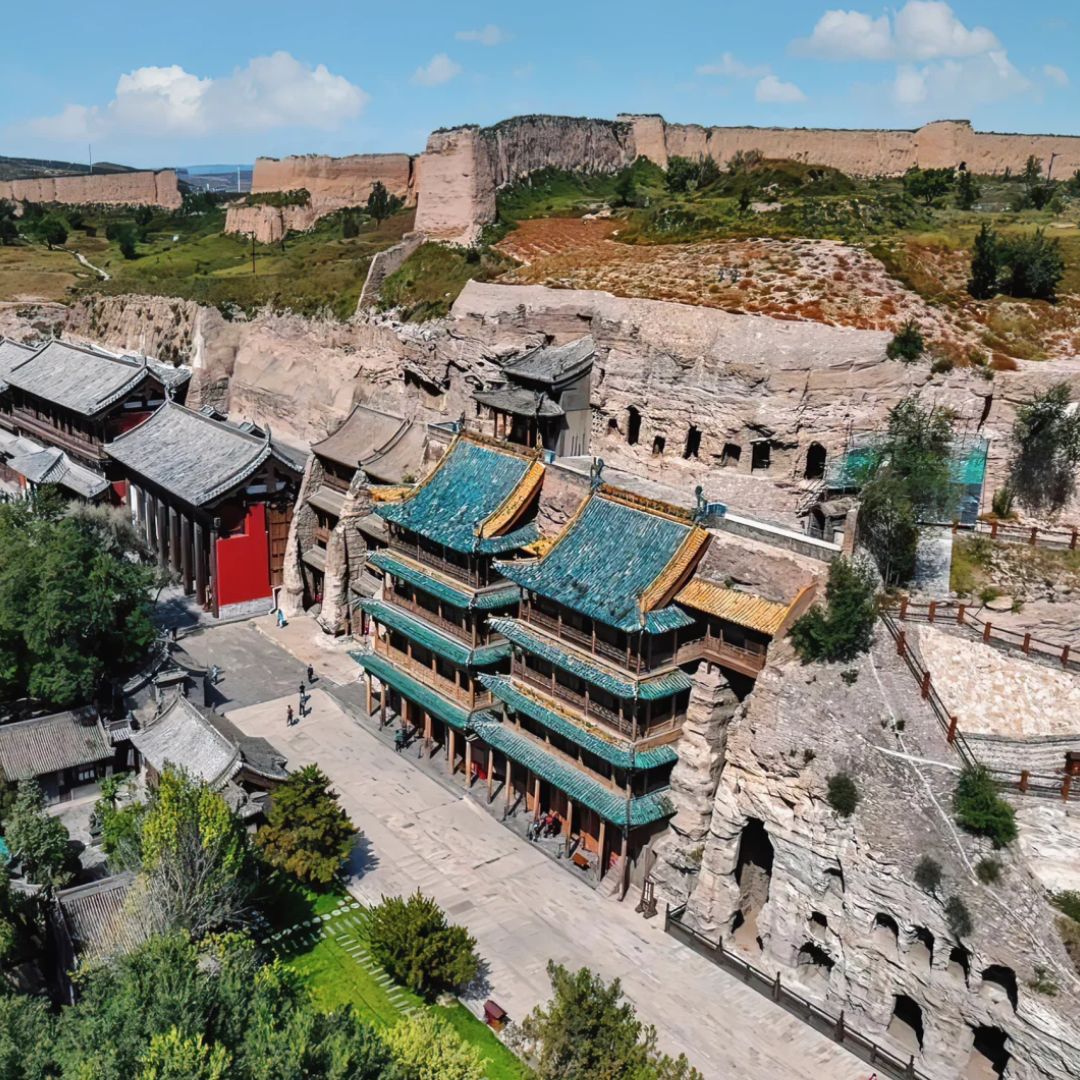
Great_Buddha_Temple_Grottoes_Scenic_Area.
4. Scenic Surroundings
The scenic area surrounding the grottoes is equally captivating. The rugged cliffs and serene landscape offer breathtaking views, especially during sunrise and sunset. Take a leisurely stroll along the paths that wind through the area to fully immerse yourself in the natural beauty that complements the man-made wonders.
5. Cultural Exhibitions and Activities
Engage with the rich heritage of the Great Buddha Temple Grottoes through various cultural exhibitions held on-site. From traditional music performances to guided tours that delve into the history of Buddhist art, these activities provide a comprehensive understanding of the significance of the grottoes.
6. Local Cuisine and Souvenirs
No visit would be complete without sampling the local cuisine. The area offers a variety of traditional dishes that reflect the culinary heritage of Gansu Province. Don’t forget to explore the nearby market stalls where you can find unique souvenirs, including handmade crafts inspired by the rich Buddhist culture.
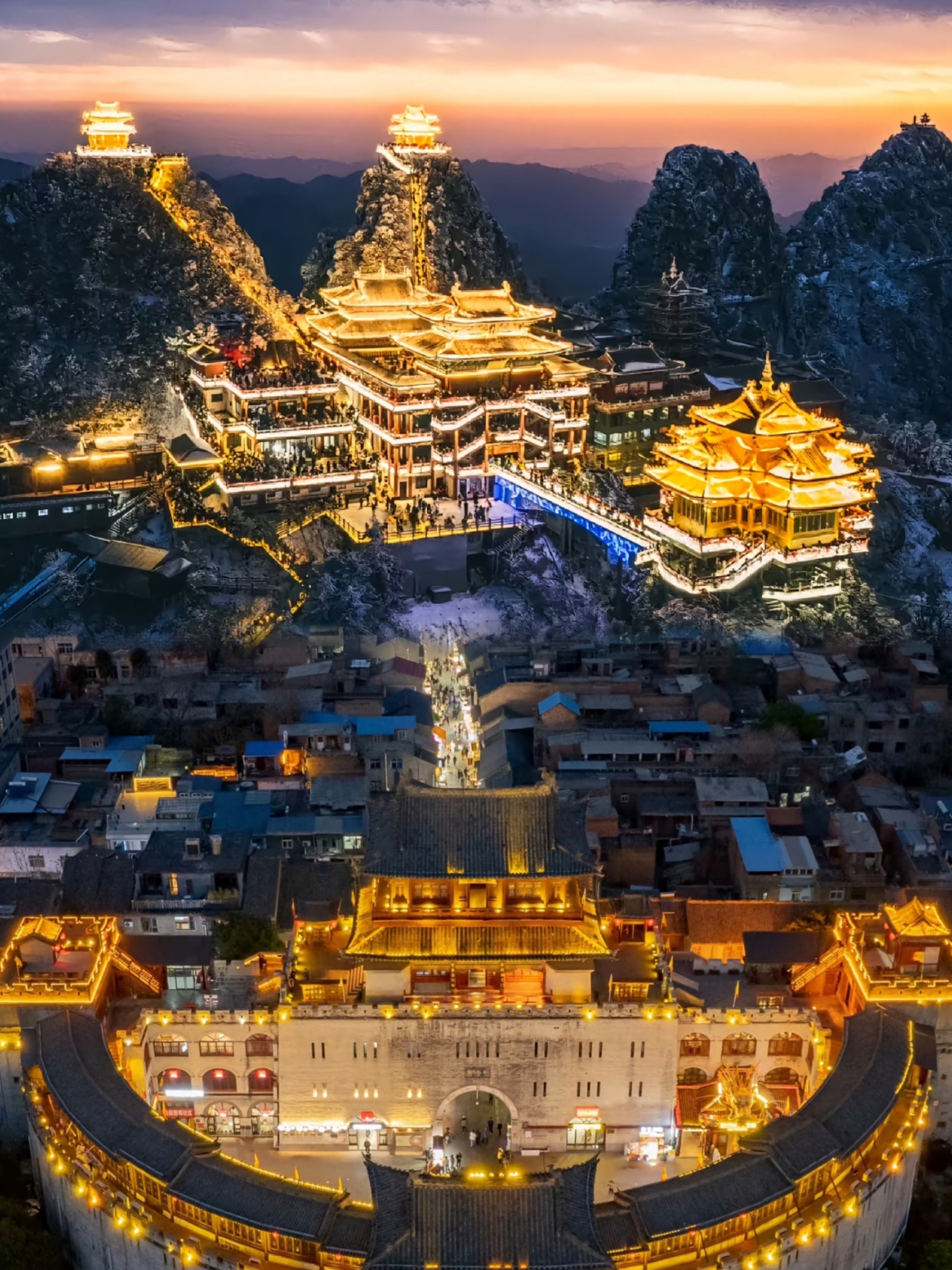
Great_Buddha_Temple_Grottoes_Scenic_Area.
7. Photography Opportunities
With its stunning landscapes and intricate artistry, the Great Buddha Temple Grottoes are a photographer’s paradise. Capture the play of light on the Buddha statue, the detailed murals, and the surrounding scenery. Early mornings or late afternoons provide the best light for photography.
8. Accessibility and Visitor Information
The Great Buddha Temple Grottoes are easily accessible from major cities in Gansu Province, such as Lanzhou and Zhangye. The site is equipped with visitor facilities, including informative signage in English, ensuring a rewarding experience for international travelers.

Great_Buddha_Temple_Grottoes_Scenic_Area.
Conclusion
The Great Buddha Temple Grottoes Scenic Area is more than just a collection of ancient caves; it is a testament to the enduring legacy of Buddhist art and culture in China. By exploring its highlights, you will gain a profound appreciation for the artistry, history, and spirituality that this remarkable site encapsulates. Whether you are an art enthusiast, a history buff, or simply a curious traveler, the grottoes promise an unforgettable journey into China’s rich cultural tapestry.
Planning Your Visit: A Practical Guide
Essential Information for Your Visit to the Great Buddha Temple Grottoes Scenic Area
Embarking on a journey to the Great Buddha Temple Grottoes Scenic Area (大佛寺石窟景区) offers a unique opportunity to delve into the rich tapestry of Chinese history, culture, and religion. Nestled in the stunning landscape of Gansu Province, this site boasts magnificent rock carvings and Buddhist art that date back to the early centuries of the common era. Here’s your practical guide to ensuring a smooth and enriching experience.
Getting There
Location
The Great Buddha Temple Grottoes are located in the city of Tianshui, approximately 1,000 kilometers west of Beijing. The site is easily accessible and can be reached by various means of transportation.

Great_Buddha_Temple_Grottoes_Scenic_Area.
By Air
The nearest airport is Tianshui Maijishan Airport (THQ), which has domestic flights connecting to major cities like Xi’an and Lanzhou. From the airport, you can take a taxi or a local bus to the grottoes.
By Train
Tianshui is well-connected by rail. High-speed trains from Xi’an and Lanzhou can take you to Tianshui in under four hours. Once you arrive at Tianshui Railway Station, local taxis and buses provide convenient transport to the grottoes.
Best Time to Visit
The Great Buddha Temple Grottoes can be visited year-round, but the ideal times are during spring (April to June) and autumn (September to November) when the weather is mild and conducive to outdoor exploration. Summers can be hot, while winters can bring cold weather, particularly in the evenings.
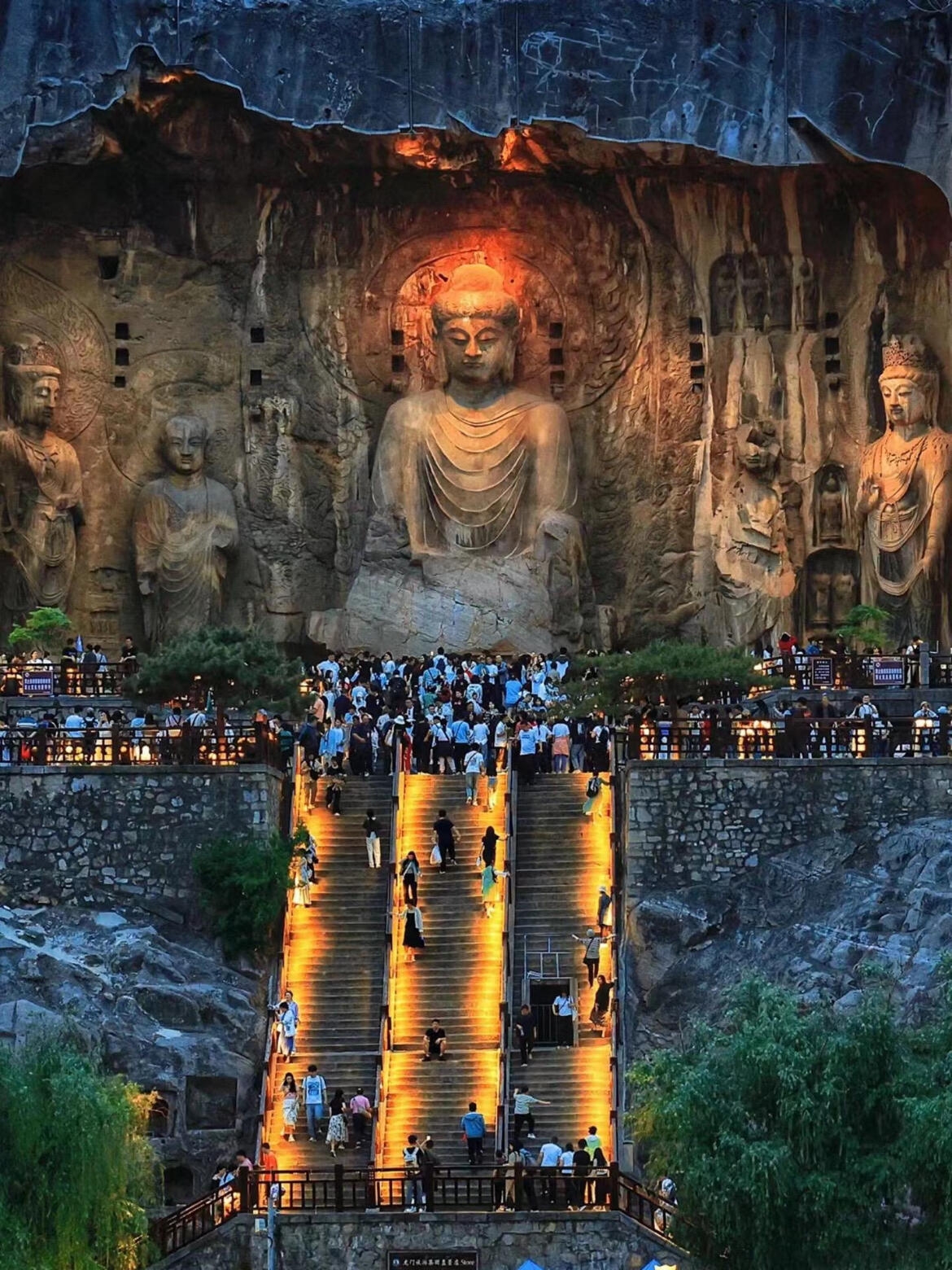
Great_Buddha_Temple_Grottoes_Scenic_Area.
Ticket Information
- Admission Fees: Tickets typically range from CNY 20 to CNY 40, depending on the season and any special exhibitions.
- Opening Hours: The grottoes are generally open from 8:00 AM to 6:00 PM. However, it is advisable to check for any seasonal changes or special closures.
What to Expect
Art and Architecture
The Great Buddha Temple Grottoes are renowned for their intricate carvings and statues, particularly the colossal statue of the Buddha, which stands at an impressive height of 7.5 meters. The grottoes feature a range of artistic styles influenced by various dynasties, presenting visitors with an overview of the evolution of Buddhist art in China.
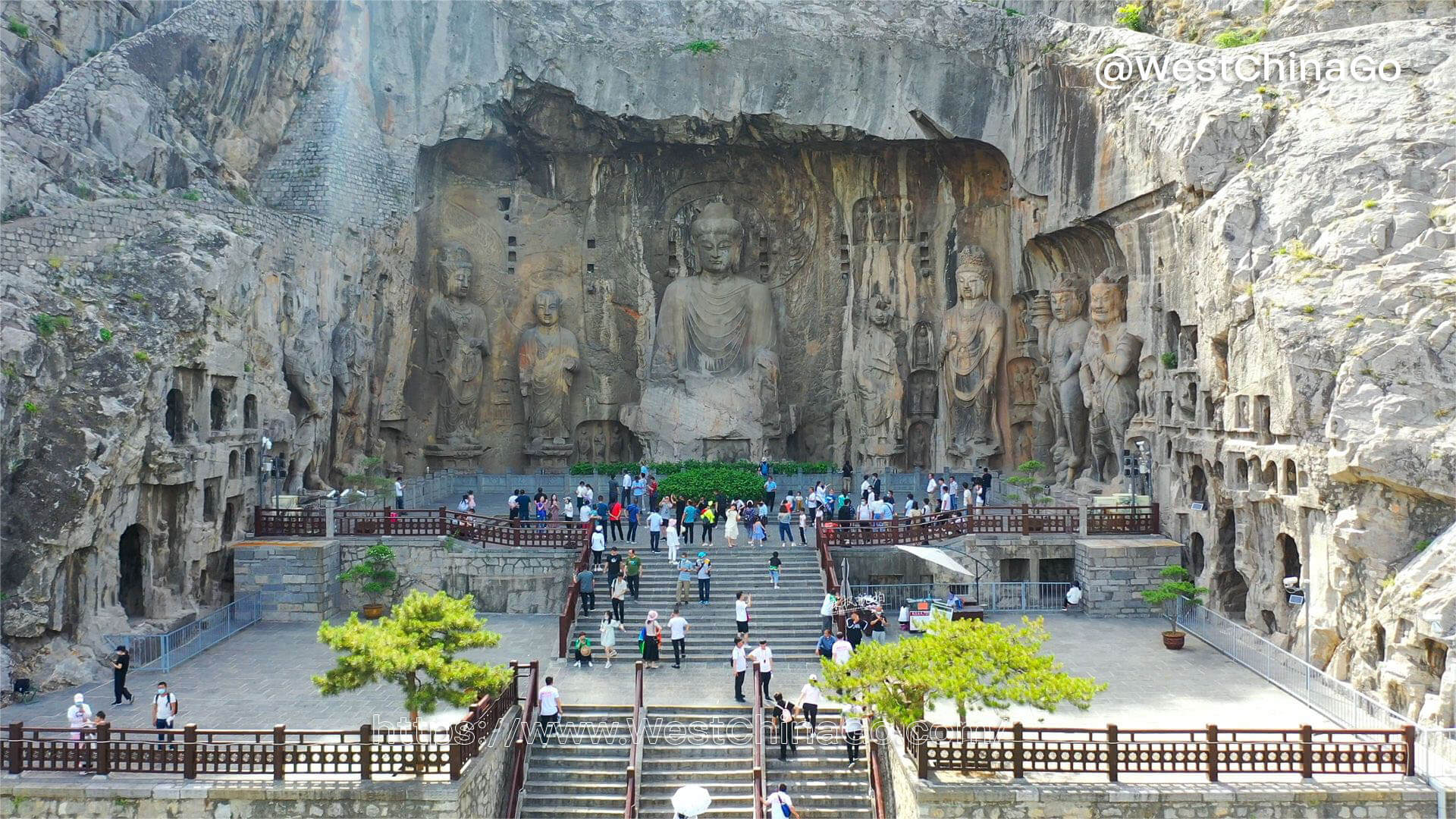
Great_Buddha_Temple_Grottoes_Scenic_Area.
Cultural Insights
As you explore the site, take time to appreciate the historical context of the carvings. Many of the grottoes contain depictions of Buddhist deities, stories, and religious practices. Guided tours are available and highly recommended, as knowledgeable guides can provide valuable insights into the significance of the artworks.
Tips for a Memorable Visit
-
Dress Appropriately: Wear comfortable shoes and dress modestly, as this is a place of religious significance.
-
Stay Hydrated: Bring water with you, as exploring the area can be physically demanding, especially in warmer months.
-
Photography: Capture the beauty of the site, but be respectful of signage regarding photography restrictions in certain areas.
-
Guided Tours: Consider joining a guided tour to enrich your experience. Guides can navigate the complex history and art of the grottoes, making your visit more insightful.
-
Combine Your Visit: If time allows, explore nearby attractions such as the Maijishan Grottoes, known for their Tibetan-style carvings, for a more comprehensive understanding of Buddhist art across different regions.
-
Plan Ahead: It’s advisable to book your tickets in advance, especially during peak tourist seasons.
Accommodation Options
Tianshui offers a range of accommodations, from budget hostels to mid-range hotels. Staying in Tianshui allows easy access to the grottoes and local cuisine. Popular options include:
- Tianshui International Hotel: A comfortable hotel with modern amenities.
- Tianshui Yijia Hotel: A budget-friendly option with basic comforts.
- Local Guesthouses: For a more authentic experience, consider staying in a local guesthouse.
Conclusion
A visit to the Great Buddha Temple Grottoes Scenic Area is not just a journey through stunning landscapes and awe-inspiring art; it is an exploration of the profound cultural and spiritual heritage of China. With the right planning and an open heart, you’re sure to leave with unforgettable memories and insights into one of the world’s most significant historical sites.
Tickets: Prices, Booking, and Tips
Ticket Information for Great Buddha Temple Grottoes Scenic Area
Visiting the Great Buddha Temple Grottoes Scenic Area (大佛寺石窟景区) is a remarkable journey into the heart of Chinese history and culture. To enhance your experience, understanding ticket prices, booking procedures, and practical tips is essential. Here’s everything you need to know to plan your visit.
Ticket Prices
- General Admission: Approximately ¥80 (Chinese Yuan)
- Student Admission: Discounted tickets for students are often available for around ¥40. Valid student ID is required.
- Children: Children under a certain height (typically 1.2 meters) may enter for free or at a reduced price.
- Guided Tours: Optional guided tours may be offered for an additional fee, usually around ¥50-¥100, which includes a knowledgeable guide to enrich your understanding of the site.
Booking Information
- Advance Booking: It is highly recommended to book your tickets in advance, especially during peak seasons. You can book tickets through various online platforms or official tourism websites.
- On-Site Purchase: While tickets can be purchased at the entrance, availability may be limited, especially during holidays and weekends. Arriving early increases your chances of securing a ticket.
- Group Discounts: If traveling with a group, inquire about potential discounts for bulk ticket purchases.
Visiting Tips
- Plan Your Visit: The Great Buddha Temple Grottoes Scenic Area can be explored in a few hours, but setting aside a full day will allow you to fully appreciate the intricate carvings and the surrounding natural beauty.
- Best Time to Visit: Spring (April to June) and Autumn (September to November) are ideal for pleasant weather and fewer crowds. Early mornings often provide a quieter experience.
- Dress Appropriately: As a place of cultural and spiritual significance, respectful attire is encouraged. Comfortable walking shoes are essential, as you may be navigating uneven terrain.
- Photography: While photography is allowed, ensure you respect any signs that indicate areas where it may be prohibited. Some grottoes, especially those with delicate artworks, may have restrictions.
- Stay Hydrated: Bring water with you, especially during warmer months, as exploring the grottoes can be physically demanding.
Additional Considerations
- Local Guides: Hiring a local guide can greatly enhance your experience. They can provide insights into the history and significance of the grottoes that you might otherwise miss.
- Cultural Etiquette: Be mindful of local customs and practices. Quiet reflection is encouraged in religious areas, and maintaining a respectful demeanor is important.
- Preservation Efforts: The site is committed to preservation, so follow guidelines and instructions from staff to help protect this cultural heritage.
By keeping these ticketing details and tips in mind, your visit to the Great Buddha Temple Grottoes Scenic Area promises to be an enriching experience immersed in the profound history and artistry of Chinese Buddhism. Enjoy your journey into the past!
How to Get There: A Complete Transportation Guide
Navigating Your Journey to the Great Buddha Temple Grottoes Scenic Area
Visiting the Great Buddha Temple Grottoes Scenic Area (大佛寺石窟景区) offers an extraordinary glimpse into the rich tapestry of Chinese history and culture. Located in the heart of Gansu Province, this UNESCO World Heritage Site is home to some of the most impressive Buddhist art and architecture in the country. Here’s how you can easily reach this remarkable destination.
By Air
The nearest major airport to the Great Buddha Temple Grottoes is Lanzhou Zhongchuan International Airport (LHW). From there, you can take a flight to:
- Dunhuang Airport (DNH): Approximately 2 hours away from the grottoes. This is the most convenient option and offers frequent flights from major cities such as Beijing, Xi’an, and Shanghai.
- Tianshui Maijishan Airport (THQ): Located about 1.5 hours from the grottoes with limited flights.
By Train
Train travel is an excellent way to experience the scenic landscapes of China. You can take a train to:
- Dunhuang Railway Station: This station serves as a key transit point for travelers heading to the Great Buddha Temple Grottoes. There are high-speed trains connecting Dunhuang to Lanzhou, Xi’an, and other major cities. The journey from Lanzhou takes approximately 6 hours.
- Tianshui Railway Station: From Tianshui, the grottoes are about 1.5 hours away by car or bus.
By Bus
From nearby cities, buses provide a reliable means of transportation:
- From Dunhuang: Buses leave regularly from Dunhuang to the Great Buddha Temple Grottoes, taking about 30 minutes for the journey.
- From Tianshui: You can take a long-distance bus directly to the grottoes. The trip typically lasts around 2 hours.
Local Transportation
Once you arrive in the vicinity of the Great Buddha Temple Grottoes, there are several options for local transportation:
- Taxis: Easily accessible and convenient for short distances, taxis can take you directly to the entrance of the grottoes.
- Ride-Sharing Services: Apps like Didi are available in larger cities, providing an alternative to traditional taxi services.
- Guided Tours: Many travel agencies offer guided tours that include transportation to and from the grottoes, which can enhance your overall experience.
Travel Tips
- Book in Advance: Given the popularity of the Great Buddha Temple Grottoes, especially during peak travel seasons, it’s wise to book your transportation and entrance tickets in advance.
- Check Schedules: Train and bus schedules may vary, so it’s essential to check timings ahead of your trip to avoid any delays.
- Stay Hydrated: Given the arid climate of Gansu Province, ensure you carry water, especially if you plan to explore the grottoes extensively.
Conclusion
The journey to the Great Buddha Temple Grottoes Scenic Area is not just about reaching the destination; it’s about immersing yourself in the historical and cultural experiences that China has to offer. With a variety of transportation options available, reaching this remarkable site is both convenient and accessible, allowing you to delve into the ancient artistry and spiritual significance of one of China’s most treasured landmarks. Safe travels!
Local Cuisine and Accommodation Nearby
Savoring the Local Flavors and Finding a Comfortable Stay
When visiting the Great Buddha Temple Grottoes Scenic Area, immersing yourself in the local cuisine and finding suitable accommodation are essential parts of your travel experience. The region, rich in history and culture, offers a delightful array of dishes and a range of lodging options that cater to various budgets and preferences.
Local Cuisine: A Taste of Tradition
The culinary landscape around the Great Buddha Temple Grottoes is a reflection of the region’s cultural heritage, with dishes that are often steeped in history and local ingredients. Here are some must-try local delicacies:
-
Noodle Dishes: Gansu province is renowned for its hand-pulled noodles (拉面, lāmiàn). Enjoy them in a rich broth with beef or lamb, garnished with fresh herbs and spices. The texture and flavor are a perfect complement to the area’s historical vibe.
-
Lanzhou Beef Noodles (兰州牛肉面): A specialty originating from the provincial capital, these noodles are served in a savory broth with tender slices of beef, pickled vegetables, and a sprinkle of chili oil. It’s a comforting dish that warms the soul after a day of exploring.
-
Mutton Skewers (羊肉串): Grilled to perfection and seasoned with cumin and chili, these skewers are a popular street food that captures the bold flavors of the region.
-
Dunhuang Dates (敦煌枣): A local snack worth trying, these sweet dates are often enjoyed dried and can be found in markets around the grottoes. They make for a healthy treat as you explore the area.
-
Sesame Oil Cake (芝麻饼): This flaky pastry, filled with sesame paste, is a delightful snack that pairs well with tea. Perfect for a quick bite between visits to the grottoes!
Accommodation: Where Comfort Meets Culture
Finding a place to stay near the Great Buddha Temple Grottoes is easy, with options ranging from luxury hotels to budget-friendly hostels. Here are some recommendations:
-
Dunhuang Silk Road Hotel (敦煌丝绸之路大酒店): This upscale hotel offers modern amenities and stunning views of the surrounding landscapes. It’s conveniently located near many attractions, making it a perfect base for your explorations.
-
Mogao Grottoes Hotel (莫高窟酒店): Located just a short distance from the grottoes, this comfortable hotel provides a relaxing atmosphere with traditional Chinese décor. The on-site restaurant serves local dishes, allowing you to indulge in the culinary delights of the region without venturing far.
-
Dunhuang International Youth Hostel (敦煌国际青年旅舍): Ideal for budget travelers, this hostel offers a friendly atmosphere and dormitory-style accommodations. It’s a great place to meet fellow travelers and share experiences from your adventures.
-
Dunhuang Legend Hotel (敦煌传奇酒店): This charming hotel reflects the local culture with its traditional architecture and decor. Guests can enjoy a blend of comfort and authenticity, with easy access to local attractions.
Tips for Dining and Accommodation
-
Advance Reservations: Especially during peak tourist seasons, it’s wise to book your accommodation and make dining reservations at popular restaurants to avoid long waits.
-
Explore Local Markets: Don’t miss the chance to visit local markets where you can sample various street foods and buy fresh produce and snacks for your excursions.
-
Ask Locals for Recommendations: Engaging with locals can lead to discovering hidden gems in both cuisine and accommodations that may not be listed in guidebooks.
With a rich blend of flavors and comfortable places to rest, your visit to the Great Buddha Temple Grottoes Scenic Area promises to be an enriching experience that extends beyond the breathtaking art and history. Embrace the local culture through its food and hospitality, making your journey truly unforgettable.
Frequently Asked Questions
Frequently Asked Questions about Great Buddha Temple Grottoes Scenic Area
1. What is the Great Buddha Temple Grottoes Scenic Area?
The Great Buddha Temple Grottoes Scenic Area, known as 大佛寺石窟景区 in Chinese, is a remarkable site featuring a series of ancient grottoes that house exquisite Buddhist sculptures and murals. It showcases the artistic and cultural achievements of Buddhism in China, offering visitors a deep insight into the historical significance of this art form.
2. Where is the Great Buddha Temple Grottoes located?
The site is located in the Gansu Province, near the city of Wuwei. This area was historically significant as part of the ancient Silk Road, making it a cultural melting pot that influenced the development of Buddhist art in China.
3. What are the main attractions within the grottoes?
Visitors can explore numerous caves, each adorned with stunning sculptures and intricate murals that depict various aspects of Buddhist teachings and tales. Notable features include large statues of the Buddha and Bodhisattvas, as well as detailed depictions of celestial beings.
4. What is the best time to visit the Great Buddha Temple Grottoes?
The ideal time to visit is during spring (April to June) and autumn (September to October) when the weather is mild and pleasant. Avoiding the peak summer months will also help you enjoy a more comfortable experience with fewer crowds.
5. How do I get to the Great Buddha Temple Grottoes?
The grottoes can be accessed by traveling to Wuwei. From major cities such as Lanzhou, you can take a train or a bus. Once in Wuwei, local taxis or public transport can take you to the grottoes, which is approximately 30 kilometers from the city center.
6. Are there any visitor guidelines I should be aware of?
Yes, visitors are encouraged to respect the sanctity of the site. Photography may be restricted in certain areas, and it is essential to follow the instructions of guides and staff to help preserve the grottoes. Additionally, please refrain from touching the sculptures to avoid damaging these historical treasures.
7. Is there an entrance fee to visit the grottoes?
Yes, there is an entrance fee to access the Great Buddha Temple Grottoes. It’s advisable to check the official website or local tourism offices for current pricing and any potential discounts available for students or groups.
8. Can I find accommodations nearby?
Absolutely! Wuwei offers a range of accommodation options, from budget hostels to more luxurious hotels. Staying in Wuwei not only provides easy access to the grottoes but also allows you to explore other attractions in the area, such as the historical sites along the Silk Road.
Final Thoughts on Your Trip
As your journey through the Great Buddha Temple Grottoes Scenic Area draws to a close, take a moment to reflect on the profound experiences you’ve encountered. The enchanting allure of these ancient caves, carved from the very heart of China’s rich cultural tapestry, is a testament to the interplay of art, spirituality, and history that has flourished over centuries.
Why This Experience Matters
Visiting the Great Buddha Temple Grottoes is not merely a sightseeing endeavor; it is an immersive dive into the depths of Chinese Buddhist heritage. Each grotto whispers stories of devotion, artistic evolution, and the vibrant exchange of ideas along the ancient Silk Road. The intricate carvings and vivid murals transport you back in time, inviting you to witness the evolution of Buddhist art and its resonance within the context of daily life.
A Journey Worth Sharing
As you prepare to leave, consider sharing your newfound knowledge with fellow travelers and loved ones. The tales of the celestial maidens and the monumental statues are not just stories of the past; they are reflections of a culture that continues to inspire and influence the world today. Encourage others to embark on this journey of discovery, highlighting the importance of preserving such invaluable cultural treasures for future generations.
Final Reflections
Let the serenity of the grottoes wash over you, and embrace the sense of connection you’ve formed with the history and spirituality of this sacred site. With each visit, you become a part of a narrative that stretches back over a millennium, contributing to the ongoing appreciation of these artistic marvels.
As you depart, carry with you not just memories, but a deeper understanding of the rich cultural landscape of China. Allow the essence of the Great Buddha Temple Grottoes to resonate in your heart, enriching your travels as you explore further corners of this magnificent country. Safe travels, and may your adventures continue to inspire and enlighten!